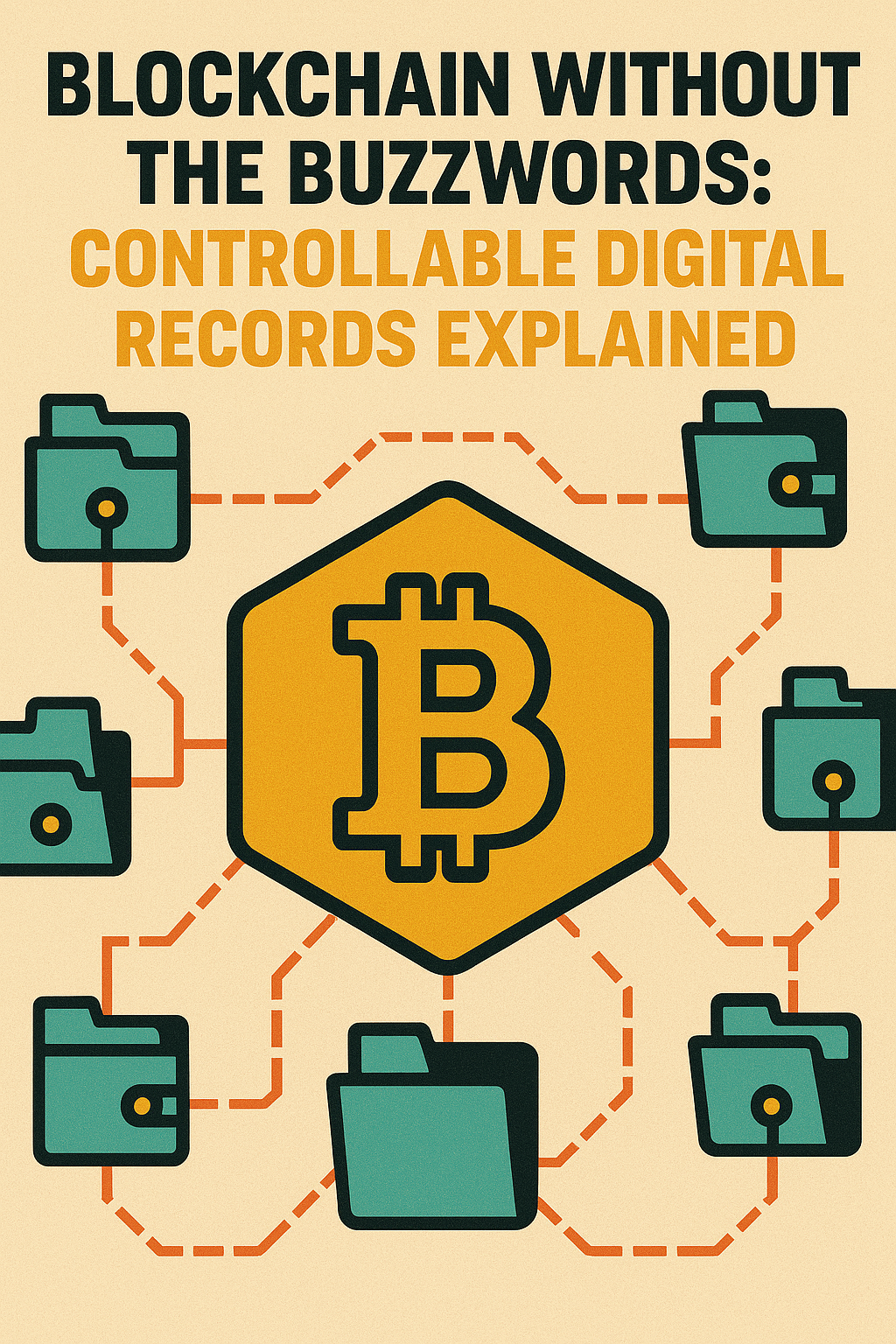
Blockchain Without the Buzzwords: Controllable Digital Records Explained
Blockchain is often portrayed as magical—the backbone of Web3, NFTs, DAOs, etc. But beneath the hype lies a precise, powerful idea: controllable digital records—records you own, present selectively, revoke when needed.
Beyond hype: the core promise
The strongest blockchain narrative isn’t about speculation or tokens. It’s about replacing blind trust in intermediaries with verifiable math and cryptographic proof.
As one paraphrase goes:
“The blockchain does one thing: it replaces third-party trust with mathematical proof that something happened.”
That clarity helps us focus on what truly matters: control.
What “controllable digital records” actually means
It’s not just storing things on a ledger. The essential qualities are:
-
Selective disclosure — you reveal only what’s needed (e.g. “is valid,” without exposing all fields)
-
Revocation or update — records should be cancellable or superseded rather than eternally immutable
-
Access policies and derivation — you control who sees what, when
-
Proof generation — the verifier can confirm authenticity without central lookup
In many systems, heavy data stays off-chain; what lives on-chain is a hash or root of a credential, anchoring integrity while preserving privacy.
Architecture that works
-
Wallet + identity layer — your cryptographic keys = your presence
-
Issuer signatures / verifiable credentials — trusted authorities sign claims
-
On-chain anchoring — certificates hashed into blockchains for auditability
-
Verifier & proof logic — you generate selective proofs (e.g. zero-knowledge) to share
This hybrid model combines scalability, privacy, and trust.
Grounded in law and practice
The concept of control is already creeping into regulation. The Reuters legal analysis of UCC amendments points to Controllable Electronic Records (CERs) — digital records that satisfy legal tests of control. (Reuters)
Under this framework, holding an asset in your wallet with control functions may satisfy legal standards of ownership and transferability.
In identity spaces, the idea of self-sovereign identity has long been a goal: where individuals own and manage their credentials. (PMC)
But as one Okta essay warns:
“The use of blockchain’s distributed ledger capabilities has potential to enable users to retain control of their identity.” (Okta)
It’s a potential that depends on engineering, trust, and adoption.
Use cases that break through
-
Titles / deeds — no longer trusting a county clerk, but verifying ownership cryptographically
-
Supply chain & provenance — trace origin claims without full history leakage
-
Credentials / certifications — verify degrees or licenses instantly
-
IP, art, media rights — control over usage, transfer, attribution
These are not speculative — in many pilot systems, blockchain-anchored credential systems are already live. (Dock)
Risks, paradoxes, and tradeoffs
-
Interoperability fragmentation — many credential schemas, few dominant standards
-
Institutional inertia — legacy systems and regulations slow adoption
-
Key loss = credential loss — recovery mechanisms must be secure
-
Immutability vs flexibility — you want records immutable for trust, but flexible for real life
One academic architecture for permissioned blockchains addresses anonymity + selective disclosure: letting entities optionally disclose identity when needed but otherwise stay unlinkable. (arXiv)
That kind of balance is the frontier.
Why this matters now
Blockchain’s real battleground is trust, not tokens or hype. Controllable digital records turn the ledger from spectacle to utility.
Once institutions, courts, and services accept these records as credible, much of the friction in verification, transfer, and ownership vanishes. And when control moves from the middleman to the individual, a new generation of systems—more equitable, auditable, and efficient—becomes possible.
We’re past the era of "blockchain hype." The real work now is in building gentle infrastructure: credential issuers, proof tools, identity layers, wallets, and adoption pathways. That’s where the next wave of transformation lies.
